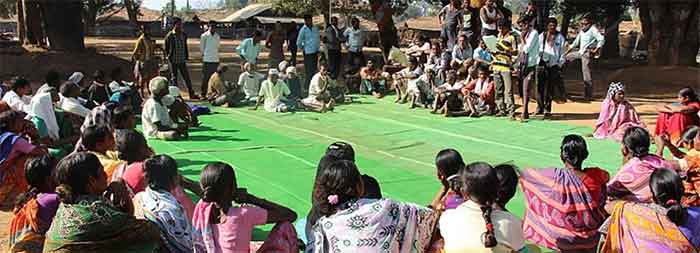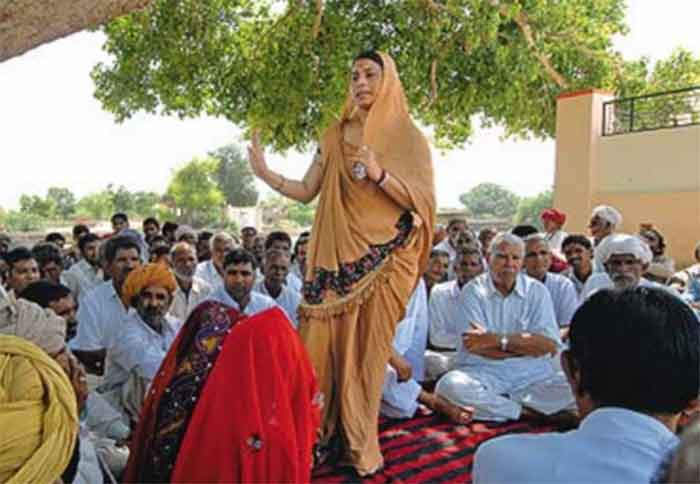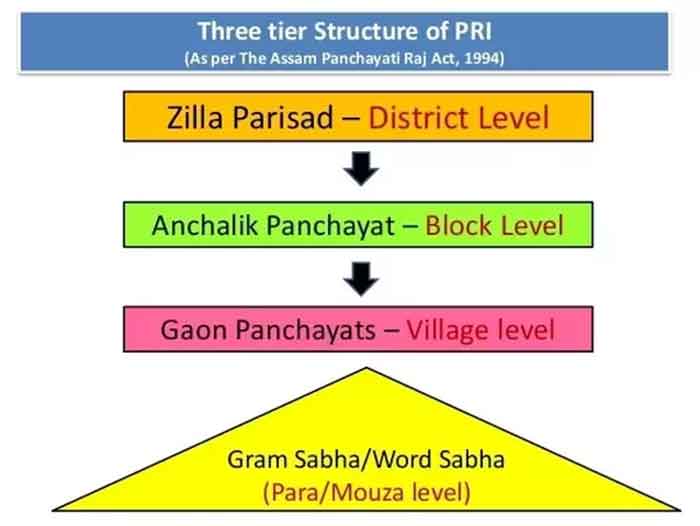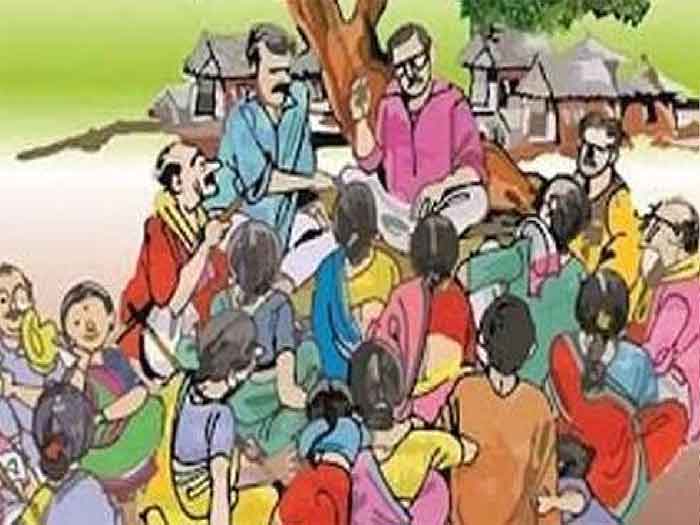
- This year marks the 30th anniversary of the Constitution Amendments that led to the three-tier Panchayati Raj structures.
- The 73rd Amendment further led to legislation for its extension into tribal areas (Scheduled Areas) and the Forest Rights Act.
- Tracing the history of 30 years, the saga of decentralisation without democratisation is the story of hope to despair, writes C.R. Bijoy in this commentary.
- The views expressed in this commentary are of the author.
Three decades ago, in 1992, the Constitution 73rd (on Panchayat Raj) and 74th Amendment Acts (on Nagarpalika or urban local bodies) were enacted. These were the first definitive steps to extend and establish political democracy as the bulwark of governance across the country. These amendments were to give expression to Article 40 of the Constitution which enshrines one of the Directive Principles of State Policy, which requires the State to take steps to organise village panchayats and endow them with such powers and authority as may be necessary to enable them to function as units of self-government.
It took the ruling class, seeped in feudal values and dependent on the command and control line departments for governance, over four decades to repose faith in the people to govern themselves. The colonial administration, established to govern a subjugated land and her peoples, that India had inherited, was finally to be disbanded, once and for all, or so it was thought.
In retrospect
India has a long history of ‘democratic’ institutions from ancient times. Marked by shared sovereignty, the separation of power and authority left the villages to a great extent to function as self-governing village republics.
Charles T. Metcalfe, the acting Governor-General of India (1835-38) recorded that “The village communities are little republics, having nearly everything that they can want within themselves…Dynasty after dynasty tumbles down. Revolution succeeds to revolution…. but the village communities remain the same……This union of the village communities, each one forming a separate little state in itself, has contributed more than any other cause to the preservation of the peoples of India.”
Creation of intermediary structures, primarily for collection of taxes and delivery of services, rapidly grew under the British undermining the authority of the gram sabhas. The Government of India Act of 1919 introduced local self-governing institutions with popular mandate and control over local affairs. Village Panchayat Acts were enacted in Madras, Bombay, Central Provinces, Berar, Uttar Pradesh, Bengal, Bihar, Assam and Punjab. The Government of India Act of 1935 introduced provincial autonomy and elected governments.
Yet, Panchayat Raj did not find a place in the draft Constitution. The debate, whether the village was “a sink of localism, a den of ignorance, narrow mindedness and communalism” (Dr. B.R. Ambedkar) or whether “Indian independence must begin at the bottom, ensuring that every village has to be self-sustained and capable of managing its affairs” (M.K. Gandhi) resulted in Article 40 in the Directive Principles of State Policy of the Constitution which was not enforceable. This was left for the future governments to deal with.
In the late 1950s and early 1960s, many states created a new three-tier system. Most got neglected except in Gujarat and Maharashtra. West Bengal saw a fresh lease of life in 1973. A two-tier system was adopted in West Bengal in 1978 followed by Andhra Pradesh, Karnataka and Kerala. Panchayat elections were regularly conducted only in Maharashtra and Gujarat (since early 1960s) and later West Bengal (since 1978).
Numerous official committees examined the issue of effective rural governance. The Balawant Rai Mehta Committee (1957) recommended the transfer of decision-making powers from the state to the village panchayats; the National Development Council (1958) wanted democracy to be extended to the grassroots and peoples participation in all governmental processes and development; the Ashok Mehta Committee (1977) proposed a two-tier system with the district panchayats to be the power centre below the state; and the G.V.K. Rao committee (1985) recommended a three-tier structure. Recognising the gram sabhas to be incarnation of the direct democracy, the L.M. Singhvi Committee (1986), favoured a new chapter to be brought in through constitutional amendment, with the gram sabha as the base of de-centralised democracy.
The amendments
The Constitution (64th Amendment) Bill of 1989 proposing insertion of Article 243 in the Constitution making the three-tier structure mandatory in all states along with the Constitution (65th Amendment) Bill to endow urban local bodies passed in the Lok Sabha on October 13, 1989 could not get through the Rajya Sabha. A combined Bill of 1990 too was kept on hold as the government changed. Finally, the Constitution (73rd Amendment) Act on Panchayat Raj and Constitution (74th Amendment) Act on Nagarpalika were passed on December 22 and 23, 1992 respectively. Ratified by all the state assemblies except West Bengal, the Acts were notified on April 24, 1993 and June 1, 1993 respectively.
Two new parts were added to the Constitution: Part IX ‘The Panchayats’ and Part IXA ‘The Municipalities’. The Acts transferred 29 subjects to the panchayats and 18 subjects to the municipalities. The states were to make suitable enactments within a year to be in conformity with these amendments. Rural governance was to be handed over to a three-tier Panchayat Raj Institutions (PRIs), and urban governance to three types of municipalities, one each for the large and smaller urban areas, and towns in transition from rural to urban area.
Whither rural governance?
About 66 to 69% of India’s population lives in the villages, which cover about 90% of the land mass in the country and come within the ambit of rural governance structures. A total of 255,278 village panchayats, 6,683 intermediate panchayats and 662 district panchayats in 755 districts cover some 6.5 lakh (650,000) villages.
As the subject of ‘local government’ is under the State list in the Seventh Schedule of the Constitution, the States were to enact suitable laws for operationalising Panchayats. Most States enacted panchayat laws or amended existing ones by 1994. The PRIs were to be completely in charge of planning and implementation with the government departments its executive arms. However, the 73rd Amendment, in letter and spirit, went missing in these state legislations. The colonial administration retained its hold over governance.
The Ministry of Panchayat Raj (MoPR) was born in 2004. In 2006-07 the MoPR started assessing the extent the 29 subjects were devolved to PRIs through a Devolution Index (DI) consisting of framework, functions, finances and functionaries under the Panchayat Empowerment & Accountability Incentive Scheme (PEAIS). To this was added ‘accountability’ and ‘capacity building’ in 2013. This was to gauge state performance in empowering the PRIs. The states were ranked accordingly. The national average Panchayat Raj DI was found to be 42.38 in 2010-11, 41.9 in 2011-12, 38.5 in 2012-13 and 39.92 in 2013-14.
The assessment was carried out by National Council for Applied Economic Research during 2006-07 to 2008-09, and the Indian Institute of Public Administration during 2009-10 to 2012-13. Rapid assessment of the status of devolution of powers and resources was carried out by Tata Institute of Social Sciences in 2014-15 and 2015-16. The Adjusted Index of Policy Adjusted Against Practice of States ranged from 0.20 to 0.77 averaging 0.39 on a scale of one in 2014-15. The Notional Improved Index of Policy Adjusted Practice ranged from 0.01 to 0.65 averaging 0.16 on a scale of one in 2015-16. This abysmal record seems to have led MoPR to simply give up assessing devolution altogether since then. April 24 of every year was declared to be the National Panchayati Raj Day in 2010.
Lack of adequate devolution, excessive control by bureaucracy, tied nature of funds and non-harmonisation with other laws were key attributes to the non-performance of PRIs. Gram sabhas were made functionally unviable by constituting them at the gram panchayat level with too large a population, as an ornamental afterthought. Powers are vested in the elected bodies above the gram sabhas while retaining departmental hegemony. Instead of popular democracy as envisaged in the Constitution, the state laws promoted ‘Collector Raj.’ Instead of PRIs taking over the departments, the PRIs became appendages and extension of the departments. Whatever little powers remained were centralised; the gram sabhas met ritualistically two to four times a year rather than becoming the authority to direct the structure above which is what decentralisation is all about.
The conflict-ridden contestation for control between the political executive of the central and the state governments, and the colonial administration, in the absence of their harmonious integration, created an extra-legal market space. Steeped in murky dealings and flouting laws with impunity, this became the coveted space where the spoils are conceived and shared with abandon. The electoral democracy reduced itself to an unruly ride to occupy this nefarious market space rather than to govern. The colonial administration continued to be empowered through numerous other laws.
The failure to deepen democracy and decolonise governance in the context of the frenzy of ‘growth’ in the cauldron of globalisation intensified the spread of resource conflicts and ecological devastations. The people are perpetually pitted against the various arms of the state. The natural resource-dependent people are displaced and driven into dire poverty, forcing them to migrate to the uncouth urban enclaves for survival.
Exemptions
Nagaland, Mizoram, Meghalaya, hill areas of Manipur, hill areas of Darjeeling district in West Bengal, and the scheduled areas and tribal areas referred to in Article 244 (1) and (2) of the Constitution were exempted from the application of the 73rd Amendment.
The special Constitutional provisions under Article 371A for Nagaland and 371G for Mizoram provide exclusive power to their state assemblies on matters concerning religious or social practices, customary law and procedure of the concerned communities, administration of civil and criminal justice in areas covered by customary law, and ownership and transfer of land and its resources. Their legislative assemblies could have extended the provisions of the 73rd Amendment through state laws if they so desired; but they did not. They preferred their local traditional governance systems with modifications.
Nagaland has tribal council for each tribe, area council, range council and village council. The 16 tribes in Nagaland occupy a distinct territory governed through their diverse traditional self-rule systems. A number of public services as school education, primary health care and electricity services are ‘delegated services’ under the control of village authorities. Mizoram too has elected village councils replacing earlier traditions of hereditary chieftainship.
Similar arrangements exist in the Sixth Schedule Areas, dominated by tribal populations. Often referred to as a state within a state, the Sixth Schedule provides the district or regional councils legislative, executive and judicial powers over a number of subjects. This includes control over land though not covering reserve forests, and to allot, occupy or use, or set apart land for any purpose that would promote the interests of the inhabitants of any village or town. The Sixth Schedule area covers 1.7% of the land mass with 0.6% of the population and 4.2% of the scheduled tribes in the country. Such areas are in Assam (six of the 21 districts), Meghalaya (except for the municipality and cantonment of Shillong), Tripura (about 68% of the State) and Mizoram (three districts).
Consequently, 16,096 traditional bodies are officially recognised as the governance authorities in Andaman and Nicobar Islands (201), Assam (469), Manipur (3,657), Meghalaya (9,017), Mizoram (834), Nagaland (1,289), Tripura (628) and West Bengal (1).
PESA: Democracy and governance redefined
The 73rd Amendment required the Parliament to extend its provisions through a legislation to the Areas notified under the Fifth Schedule and Sixth Schedule of the Constitution. The Union Government did not initiate any legislative process for the Sixth Schedule Areas. The Ministry of Rural Development constituted the Bhuria Committee to outline the salient features of the law for extending the provisions of the 73rd Amendment to the Scheduled Areas in 1994.
Their report of 1995 outlined the powers, functions and procedures for gram sabha, gram panchayats, intermediate panchayats and autonomous district councils in Scheduled Areas. While vastly decentralising the powers, the Committee adopted the Sixth Schedule pattern with legislative, judicial and executive powers over certain subjects. Responding to the National Front for Tribal Self-Rule, a national coalition of Adivasis movements, the Parliament enacted the Provisions of the Panchayat (Extension to the Scheduled Areas) Act in 1996 PESA).
PESA made historically distinct departures. First it defined the gram sabha as the hamlet or group of hamlets in contrast to the absurdly unwieldly gram sabha at the gram panchayat level of the PRIs. Then it defined gram sabha powers with a caveat that the structures above shall not encroach into its powers. This is possible only if the structures above the gram sabhas are autonomous in their own domains. Therefore, the structure above at the district level were to be patterned on the Sixth Schedule.
The gram sabhas are to prevent land alienation, restore illegally alienated lands, own minor forest produce, control minor water bodies and minor minerals within their territorial jurisdiction, manage village markets, control institutions and functionaries in all social sectors, restrict sale/consumption of liquor, safeguard and preserve the traditions and customs of the people, their cultural identity, community resources and the customary mode of dispute resolution amongst others. This became the first law in the country that redefined democracy with people at the centre of power instead of the elected members.
None of the state PESA amendments fully complied with the PESA provisions. Quite predictably, all the states without exception ignored the provision to adopt the Sixth Schedule pattern with the autonomous district council in charge.
Chhattisgarh was carved out of from Madhya Pradesh in 2000 and Telangana from Andhra Pradesh in 2014 along with some Scheduled Areas. The ten states relevant for PESA did not bother to operationalise the laws for over a decade. Rules were notified only since 2011 in six States. Odisha, Chhattisgarh, Madhya Pradesh and Jharkhand, where the bulk of tribal peoples live with rich natural resources above and below ground, for these very reasons, are yet to notify Rules.
Most state and central subject laws were not amended to comply with PESA. The self-rule gram sabha was stuck into the emasculated mainstream PRI structure making self-rule administratively unviable. Nevertheless, people’s assertion of village self-rule as a legally legitimate political right emboldened the masses. In 2017-19, the Adivasis in disgust, despair and anger, launched the Pathalgarhi movement erecting stone slabs to demarcate the area of their villages’ jurisdiction in Jharkhand, declaring their autonomy and self-rule. This soon spread to adjacent States. The states responded with heavy police crackdowns and filing cases on a few thousands including sedition cases on a few hundreds.
The Fifth Schedule Areas cover 77,564 villages of 22,040 panchayats in 664 blocks. A total of 45 districts are fully covered and 63 districts are partially covered. Covering 11.3% of the land mass with 5.7% of the total population, 35.2% of the scheduled tribe population of the country live here.
FRA: Ushering in democracy in the forests
The mindless mid-2002 order of the Environment Ministry (MoEFCC) to summarily evict ‘all encroachments which are not eligible for regularisation’ triggered a wave of violent evictions across the country. People were evicted from 1,524 square kilometres of forests between May 2002 and March 2004 alone.
The resistance to this illegal order and the struggle for democracy in the forests coalesced into the Campaign for Survival and Dignity, a nation-wide coalition of forest dwellers organisations. The PESA framework provided the legal opening to formulate a mechanism to finally undo the by now officially acknowledged ‘historical injustice’, leading to the enactment of Scheduled Tribes and Other Traditional Forest Dwellers (Recognition of Forest Rights) Act, 2006 (FRA).
Departing from the usual empowering of the colonial administration, the law empowered the hamlet level gram sabhas as in PESA, to determine and approve the individual and community rights that they have been customarily enjoying. It provided for the demarcation of the ‘customary common forest land within the traditional or customary boundaries of the village or seasonal use of landscape’ which the gram sabhas are to protect, preserve, regulate and manage. Gram sabha consent for forest diversion for any purpose became mandatory.
The MoEFCC reckoned in 2009 that around 400,000 square kilometres of community forest resources are to be assigned ‘to village level democratic institutions’. As on December 2021, 64,361.67 square kilometres of forests were recognised and titled under FRA. This is perhaps the largest ever tenurial rights recognition in contemporary history anywhere in the world.
What the states could not do since independence were achieved when the gram sabha became the statutory authority to determine rights. FRA went steps ahead of PESA without any ambiguity in detailing a governance law to usher in democratic governance over the forest by forest dwellers. This is evidence enough why people’s democracy works, works fast and well.
Epilogue
In March 2010, the MoPR proposed three sets of amendments to the Constitution combining elements of the Sixth Schedule and Fifth Schedule where Panchayat Raj is applicable. It proposed a unified elected district council replacing the district panchayat, with representation from all rural and urban areas (excluding metropolitan areas) with powers over all subjects under panchayats and municipalities. The district council will be responsible for planning for the whole district consolidating the plans prepared by panchayats and municipalities, and for all the local functions. The district planning committee, comprising officials and experts, will assist this council. The district collector is to be the chief executive officer accountable to the elected district council.
The powers of the gram sabha under the PESA were proposed to be inserted as a new Schedule to the Constitution. The PESA provisions were to be added to the powers of the traditional village bodies of the Sixth Schedule Areas. But strikingly, this is yet to catch the popular attention.
The author examines resource conflicts and governance issues. An independent researcher, he works with mostly people’s initiatives on resource rights and democratic governance, such as forest rights, village self-rule and autonomy.
Originally published in Mongabay












































